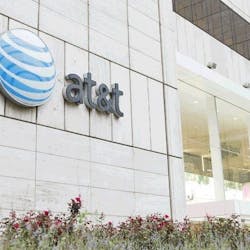It's obvious that the industry's revenue streams have been under assault for years. Cord cutters and cord shavers have been more of an annoyance than a doomsday threat. The center has held: The reality is that putting together a video package that approximates a healthy cable package - in other words, what folks are accustomed to and most still want – through the available alternatives is as costly or more than traditional packages. It also is inefficient.
Cable operators may need to adjust that thinking. The safety net may be disappearing, and the agent of change likely will be wireless and cellular networks that won’t rely on cable’s infrastructure at all. It’s "over the top" in the truest sense of the phrase.
There seem to be two interrelated threats emerging. The first is called “zero rating” or “positive price discrimination.” It is a big issue in the world of Net Neutrality. Zero rating is a clever approach in which content companies pay for the data used by subscribers to download their apps, content or other products. It is a controversial approach that is seen by some as an end run around Net Neutrality because it creates conditions for carriers to favor their own or their partners’ mobile products. Avoiding those arrangements, of course, is a key goal of Net Neutrality.
The zero rating concept already is being used. According to Tech Spot, the Australian ISP iiNet will not count Netflix traffic against subscribers’ broadband caps. A blog post at the World Wide Web Foundation said that the Dutch government has fined Vodafone for employing the same approach for delivery of HBO Go.
Though the iiNet/Netflix implementation is on a wired network, the concept seems more likely to gain traction on wireless networks, especially in the States.
A seemingly related project is coming from Verizon. The Washington Post and other sites report that the carrier is set to offer free, commercially supported content. “Using technology it purchased from Intel last year, the telco has been open about getting into streaming media, too,” the story said. “Whatever it comes up with, according to Chief Financial Officer Fran Shammo, might eschew a subscription fee.”
The story provides some background on the idea. An interesting point is that in exchange for heavily subsidized or free content, subscribers may be required allow the carrier to collect, use and even sell its subscriber data. That would be a deal breaker for some folks – but not for all.
The Washington Post story referred to a Reuters’ story as its source. In that piece, writer Malathi Nayak wrote that the Verizon package will have 20 to 30 channels and that Apple is considering a package of about 25 channels, though that service apparently will at least start out using a traditional subscription model.
It’s easy to see what is going on here: Very smart folks on the technical and legal/regulatory side see that a big obstacle to really breaking open cable operators’ hold on traditional programming – the content that most people still want – is finding creative ways to offer it less expensively and as easily as customers are used to. The nascent approaches seem to be viable on both wired and wireless networks. In the States, wireless likely will be the best way to do this. It is worth remembering that there is no reason the programming, once brought into the home via WiFi, LTE or, eventually, 5G, can’t be sent to stationary TVs to provide users with the same experience they enjoy today.
The specifics of how this will roll out still are unclear. Open questions are who is offering what types of packages, whether wireless/cellular networks have enough capacity to support such services in addition to what they carry today, if these services will be free or heavily discounted and, of course, whether they really have market appeal. Legal and regulatory challenges to the central concept of zero rating will be made. This will bounce the ball back to The Federal Communications Commission, which, at least during the current administration, has not been shy about saying what is in and is out of bounds.
At a higher level, however, one thing becomes clear: The number of delivery options, the growing power of wireless networks, the existence of so many new sources of content and a maturing generation of folks who are just fine with proactively controlling their viewing experience means that the bundle is doomed. It will take time, but cable operators must prepare for this reality.





